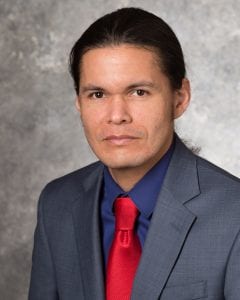In this month’s OIT Spotlight, we meet Guillermo Vasquez, the Linux & Research Technology Specialist for Academic Technology Services.
Who are you? What do you do? Where are you from?
 My name is Guillermo Vasquez, and I’m a natural researcher, a technology enthusiast, and an amateur photographer. I’m also a Linux professional and a cyber-security expert with specializations that include ethical hacking and technology forensics investigation. I was born to a loving family of farmers in the heart of Chihuahua, Mexico. I consider Linux to be my first language.
My name is Guillermo Vasquez, and I’m a natural researcher, a technology enthusiast, and an amateur photographer. I’m also a Linux professional and a cyber-security expert with specializations that include ethical hacking and technology forensics investigation. I was born to a loving family of farmers in the heart of Chihuahua, Mexico. I consider Linux to be my first language.
How did you become interested in Linux and technology?
I’ve possessed a passion for both electricity and technology ever since I can remember. My parents always nurtured my curiosity by allowing me to disassemble almost any electrical or electronic device at home, sometimes with the assured impossibility of putting it back together. When I was a teenager, I had the need for a reliable and free operating system to provide my rural community with Internet connectivity—when my mother presented me with a gift of four CD-ROMs which introduced me to Slackware Linux.
What is your job at SMU?
My job is to enable faculty and students with technology. As the Academic Technology Services team’s Linux & Research Technology Specialist, I provide and develop technological tools and practices that help researchers, faculty, and students achieve desired goals whatever they might be. Projects I’ve worked on this year ranged from cyber-security, automation in electronics—to hosting and virtualization technologies, typically from Linux and open-source perspectives.
How can your expertise help faculty?
From years of working as a technology professor, I’ve been able to develop an ability to take complex systems and ideas and translate them in understandable ways to a variety of academic audiences. Faculty (especially those whose curriculum can benefit from the use of Linux) can often unload the burden of Linux-technology remediation and troubleshooting efforts onto me. I can assist with designing and implementing highly customizable Linux training sessions specifically targeted to the technology used by various courses – allowing faculty members to focus on class materials, while I help work with Linux.
How can your expertise help students?
Often our research students crave not just technical help, but building relationships within the campus community. I’ve really enjoyed keeping my door open for student researchers and am excited to work directly with each on a case by case basis to explore technologies they need.
What are some recent examples of project you’ve worked on? What “home runs” have you hit in your first year at SMU?

One of the more exciting projects with which I’ve assisted has been working in Dedman College’s Physics Department with Dr. Thomas Coan. I’ve been able to help build an event display array for the NOvA’s remote operation here at SMU from the ground up. We have also successfully ported the Muon decay detector software to Linux and then onto a Raspberry Pi, enabling students to utilize the Muon decay detector from their personal mobile devices.
In the Lyle School, I’m currently working with Dr. Sengor and her mechanical engineering team to construct inexpensive precision gas counters to automate the process of gas collection and measurement from several samples simultaneously. If this project is successful, I hope to allow Lyle and SMU to save around $60,000 per unit on equipment currently utilized commercially.
What are some of the challenges you are facing in research technology at SMU?
Perhaps the greatest challenge I face is one of communication. Communicating clearly to faculty who have Linux needs is the first challenge—I want everyone to know that I’m here and that I’m here to help both faculty and students with Linux.
Communicating research technology priorities within IT can be challenging as well, since research technology requests are usually “non-standard” and aren’t very predictable or repeatable. Researchers need access to technology tools and personnel that are flexible, unpredictable and which do not fit into regular categories and which often cannot be solved by traditional workflows.
On the other hand, IT resources can be more successful if faculty can communicate research goals and needs more succinctly. Part of my challenge is serving as a translator to bridge research technology needs with IT capabilities.
What next for SMU research technology support for you—what goals do you have to improve services in the year ahead?
In the year ahead, I’ll keep evangelizing how I can help advance Linux-based services to faculty and students. There’s so much more that faculty and students could be doing with Linux and as I work to build relationships with SMU’s Linux community, I hope to advance research capabilities that depend upon Linux. I also expect to enable more “new” technologies at SMU like Arduino controllers, Raspberry Pi, 3D printing, etc. so that I can always bring ideas for “what is out there” to SMU’s researchers. Above all, I want SMU’s researchers to know that I’m here to build partnerships to help them do more than ever before.


